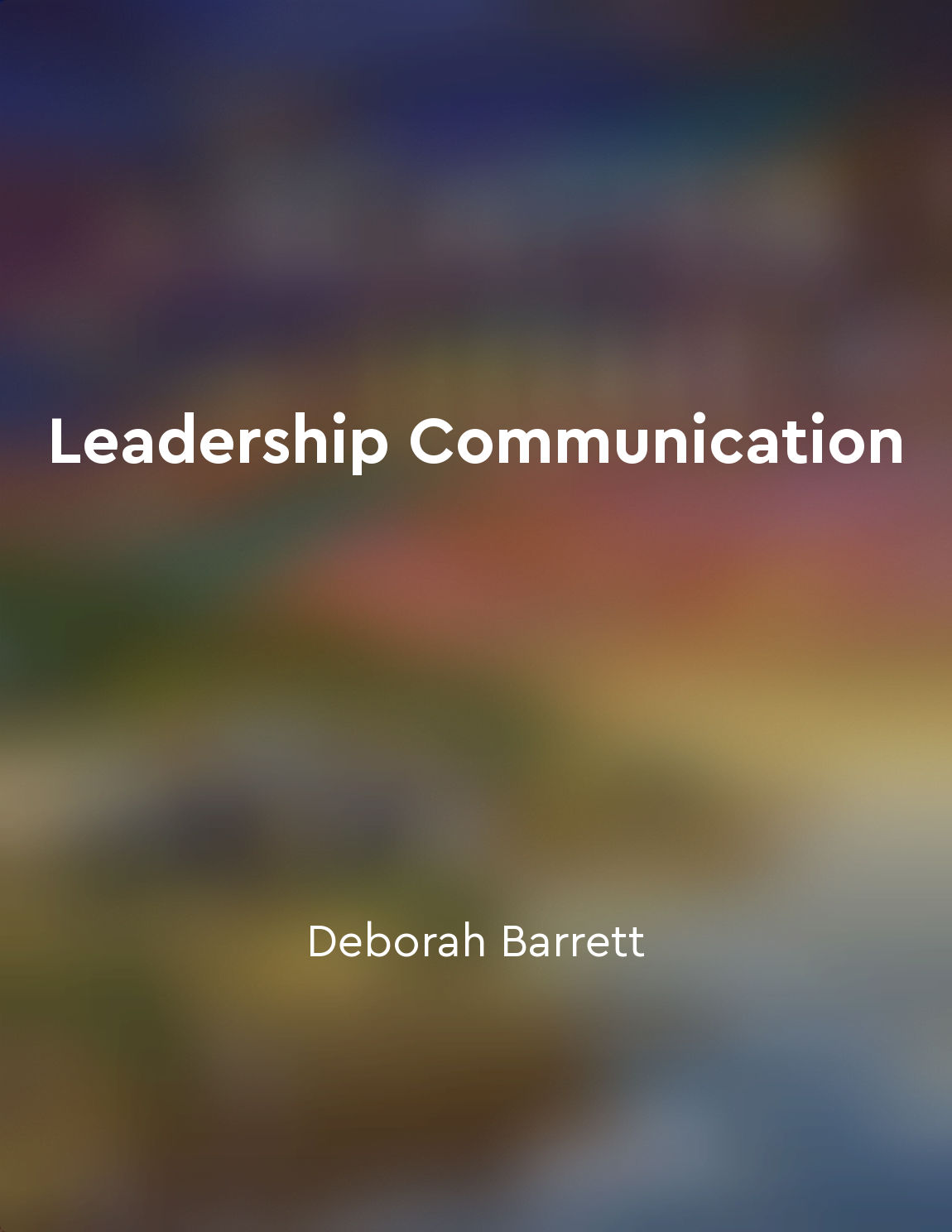Audio available in app
Nonverbal signals can reveal underlying emotions and intentions from "summary" of The Silent Language of Leaders by Carol Kinsey Goman, Ph.D.
One of the most powerful ways that leaders can communicate with others is through nonverbal signals. These signals can provide valuable insights into a person's true emotions and intentions, often revealing more than words alone. By paying attention to nonverbal cues such as facial expressions, body language, and tone of voice, leaders can gain a deeper understanding of what their team members are feeling and thinking. For example, a person's body language can indicate whether they are feeling confident and assertive or anxious and unsure. A firm handshake, steady eye contact, and an upright posture may suggest confidence, while fidgeting, avoiding eye contact, and slouching could indicate insecurity. By being attuned to these nonverbal signals, leaders can adjust their approach accordingly to better support their team members and address any underlying issues. Similarly, facial expressions can reveal a wealth of information about a person's emotional state. A smile can indicate happiness, while a furrowed brow may suggest concern or frustration. By observing these subtle cues, leaders can better understand how their team members are feeling and respond with empathy and understanding. In addition, tone of voice can also provide important clues about a person's emotions and intentions. A calm, steady voice may indicate confidence and assurance, while a trembling voice could suggest fear or uncertainty. By listening carefully to the tone of voice, leaders can pick up on subtle nuances that may not be immediately apparent in the words themselves.- Nonverbal signals play a crucial role in effective communication, allowing leaders to connect with others on a deeper level and respond more effectively to their needs. By being mindful of these cues, leaders can create a more supportive and empathetic work environment, fostering stronger relationships and better collaboration among team members.
Similar Posts

Clarity in communication prevents misunderstandings
The importance of clarity in communication cannot be overstated. When we express ourselves clearly, we are more likely to be un...

Adapt your communication style to match others
Communication is a two-way street. It involves not just speaking, but also listening and understanding. One important aspect of...

Effective communication requires active engagement with the audience
Effective communication isn't just about delivering a message; it's about truly connecting with your audience. This requires mo...
Individuals adopt different roles in games
In the game of life, individuals often find themselves taking on different roles. These roles can vary depending on the situati...

Seek feedback to validate your interpretations of others' thoughts
To truly understand others' thoughts, it is essential to seek feedback on our interpretations. This feedback serves as a valida...
Effective communication is essential for successful relationships
The ability to communicate effectively plays a fundamental role in the success of any relationship, be it personal or professio...
Setting boundaries is necessary to maintain healthy relationships
Boundaries are like fences that define where one person ends and another begins. They are necessary in maintaining healthy rela...
Clarify any misunderstandings
When misunderstandings arise in communication, it is essential to address them promptly and effectively. This involves taking t...
Fostering a positive attitude attracts likeminded individuals
Maintaining a positive attitude is crucial not just for your own well-being, but also for attracting like-minded individuals in...

Engage in active listening
To really connect with someone, you need to immerse yourself in the conversation. Active listening involves more than just hear...

